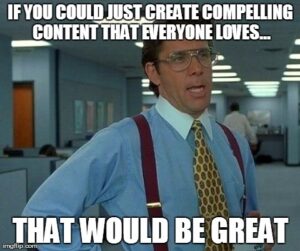While sitting in my office today, my office mate looked at me holding up a picture of a map with lines running across the page and up and down the page. She pointed to the lines and said, “What are these called? I can’t remember. I’m having a mental block.” I told her that they were longitude and latitude lines. I further explained that I would NEVER forget the names and directions of the lines, because my 7th grade social studies teacher taught me that the ones that go up and down the page are longitude, the LOOONNNGGGG lines (long is in the word longitude) and the ones that go across the page are latitude (And the way to remember them is to remember how the two t’s are crossed in the word latitude (latitude lines go in that direction).
After explaining how I’ve remembered this information for countless years, she looked at me and said, ‘Oh, that’s right! I learned to remember latitude by saying lat is flat (meaning the latitude lines are flat).’
No two brains are alike
Some people can remember and learn things just by seeing it once. Others learn simply by listening. And others have to both see and hear something to have it stick in their brains. Ask anyone, and they will tell you they have a preference of how they consume content. As marketers, we need to remember this when creating content and information meant to be consumed by many.
Are you a reader, skimmer or bottom-line viewer
Think about who you are. Are you a reader, a skimmer/scanner or a bottom-line viewer when it comes to reading content? Kathryn Aragon, former editor of The Daily Egg and author of The Business Blog Handbook, wrote a blog post explaining each of these reading styles and offered helpful tips on how to write for each of these types of consumers.
Any good marketer or public relations professional knows that it is important to have your core messaging show up four to five places in your content. We are not talking about repeating a phrase over and over. We are talking about explaining the same concept in four/five different places and in four/five different ways throughout your copy.
The places your core message should appear:
- Headline and subtitle
- Body copy
- Subheads throughout the copy
- Conclusion
- Call to action
Increasing engagement with your audience
According to Kathryn Aragon, here is how different types of readers are engaging with your company’s content:
- Readers: They start at the top of the page and read everything, word for word.
- Skimmers/Scanners: They’ll read the headline and a sentence or two from the opening. If interested, they’ll scroll through the copy and focus on subheadings, before deciding what sections to read.
- Bottom-Line Viewers: They’ll read a headline, a sentence or two at the top, and then jump right to the point if they are interested.
By telling your story many ways throughout your content, every type of content consumer develops an understanding of your core message and can decide if they would like to read further.
Creating content for everybody
In addition to restating and rephrasing your key message throughout your content, you also need to remember to create content pieces in different formats. There are those who need a summary of key points (think checklists), some who are visual learners (think videos), some who crave technical info (think whitepaper) and those who want all the details (think guidebook/ebook).
A brainstorming session with multiple team members can help bring in various viewpoints on learning styles so you can be sure to cover many different formats. This way you can turn one topic idea into many different pieces of content, which helps not only with keeping your content calendar full, but also increases potential engagement with your topic. Some formats lend themselves to different posting mediums (social media vs industry publication vs your own website) as well as target different learners.
And speaking of posting mediums, all this content needs to be posted and promoted. A good marketing strategy is going to be just as important to success as creating the content itself. Need help? Check out our content marketing philosophy and how we do it.
